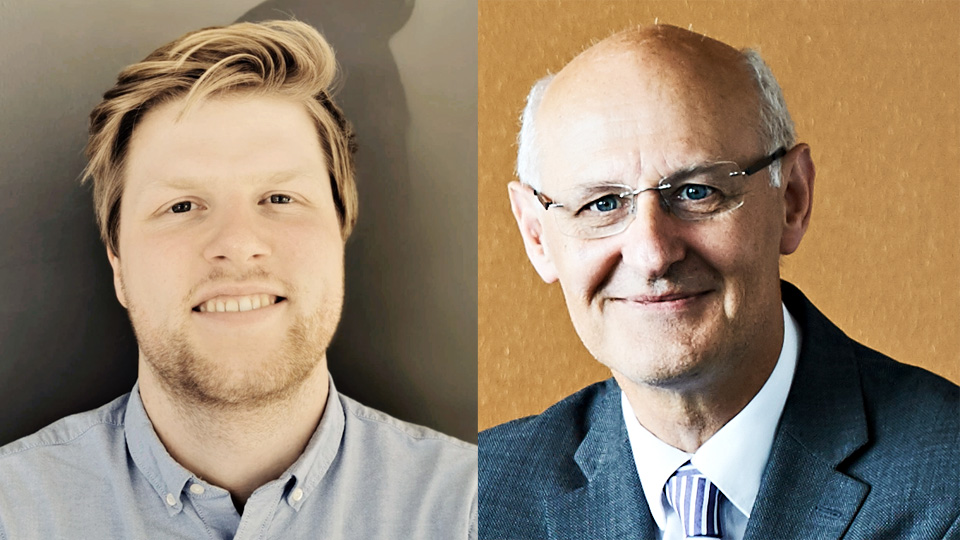Shippers could pay surcharges for green transport

Heavy goods vehicles are responsible for around 20 percent of transport-related CO2 emissions in Europe. If the EU wants to reduce emissions in the transport sector by 90 percent by 2050, the heavy goods sector will play a correspondingly large role. It's not easy: So far, the steady growth in European road freight transport has offset many of its environmental improvements: by 2050, it is expected to increase by 47 percent compared to the base year of 2015. In addition, the market is highly fragmented: More than half a million companies in Europe offer road freight transport services. 99 percent of them have fewer than 50 employees.
The majority of these transport companies recognize the need to reduce their CO2 emissions. This is what Prof. Alan McKinnon from the Center for Sustainable Logistics and Supply Chains (CSLS) at the Kühne Logistics University (KLU), and Moritz Tölke, KLU alumnus and Junior Technical Manager at the Smart Freight Center (SFC) in Amsterdam, observe in their study "Decarbonizing the operations of small and medium-sized road carriers in Europe". However, often the weak financial position of these small carriers, the limited willingness of their customers to reward lower emission values and, in some cases, a lack of knowledge about decarbonization options beyond the purchase of new vehicles impede the reduction of emissions, according to the paper. More than 800 haulage companies from 32 European countries took part in the study.
DVZ: Prof. McKinnon, anyone who wants to reduce CO2 emissions must first know how much their company is emitting. According to your survey, many small and medium-sized enterprises (SMEs) lack the basic knowledge to calculate their own CO2 emissions. Which values do they have to determine and how?
Alan McKinnon: A transport company must at least be able to calculate the total emissions from its transport operation. This can be done simply by multiplying the total amount of fuel consumed by a standard energy emission factor for the type of fuel used. The next step would be to break down emissions according to vehicles, journeys, shipments and customers. The tonne-kilometers (weight moved multiplied by distance travelled) are required for the correct allocation of emissions. The distribution of emissions across several shipments in a general cargo (or groupage) operation is more complicated than with full loads, but it can be done according to standard rules as defined in EN 16258, the guidelines of the DSLV, and the GLEC framework. Online digital tools can help with the calculation.
Mr Tölke, you have noticed national differences, among other things, in the ability to calculate emissions, the implementation rates for CO2-reducing measures and the perceived business opportunities that CO2 reduction offers. What do you attribute this to?
Moritz Tölke: Only in France have road hauliers been legally obliged for years to provide their customers with CO2 data. Other European governments support and advise freight forwarders in introducing ways to measure their emissions to varying degrees. In some countries such as the Netherlands, their efforts are additionally reinforced by initiatives from industrial and environmental organizations.
Your survey indicates that - even ahead of customer expectations - cost savings are the main drivers for SMEs to implement emission-reducing measures. Which measures are most cost effective?
McKinnon: Most of the measures also have direct commercial benefits. If investments are required, the payback times are usually quite short. The most cost-effective means of decarbonization are usually driver training, telematics systems and aerodynamic profiling. They can each lead to cost and emissions savings of 3 to 10 percent, depending on the baseline efficiency of the operation.
The carriers surveyed knew much more about organizational possibilities than about possible technical optimizations. Why?
McKinnon: In fact, we found that the technical measures were known and implemented by less than 30 percent of those surveyed, while this figure was 78 percent for the operational measures. One reason could be the pace of technological change in road freight transport in recent years, which will accelerate over the next decade with the arrival of a new generation of electric and fuel cell vehicles. In addition, there are various fuel-saving technologies that can be retrofitted in existing vehicles. It is difficult for fleet managers to stay informed about all these technical innovations.
In your opinion, however, they still offer great, as yet untapped savings potential. How could they be made better known?
Tölke: Our interviews with SMEs suggested that industry associations, manufacturers of vehicles and vehicle equipment as well as government agencies should do more to advise carriers, especially on technical issues. Here it is important that, on the one hand, financing options are clarified and, on the other, the potential benefits are communicated in a honest and realistic manner. In addition, the SMEs should share information about their experiences more closely, possibly with the help of their trade associations.
How can shippers help carriers to become more committed to reducing emissions?
Tölke: If the shippers are serious about the decarbonization of European truck traffic, this must be signalled to the purchasing department. Shippers can, for example, pay a surcharge for more environmentally-friendly transport, work with carriers on environmental initiatives and pilot projects, and award longer-term freight contracts that are linked to the implementation of certain decarbonisation measures or CO2 reduction targets. The latter would give hauliers greater security when planning to cut emissions. (ben)
More information:
Download the full report: Toelke, M. and McKinnon, A.C. (2021) Decarbonizing the operations of small and medium-sized road carriers in Europe. Smart Freight Centre (Amsterdam) and Kühne Logistics University (Hamburg).
Insights on the decarbonization of European logistics from the perspective of over ninety senior executives can be found in the recent publication of the CSLS: “Measuring Industry’s Temperature – An Environmental Progress Report on European Logistics”.
Center for Sustainable Logistics and Supply Chain (CSLS), KLU.

